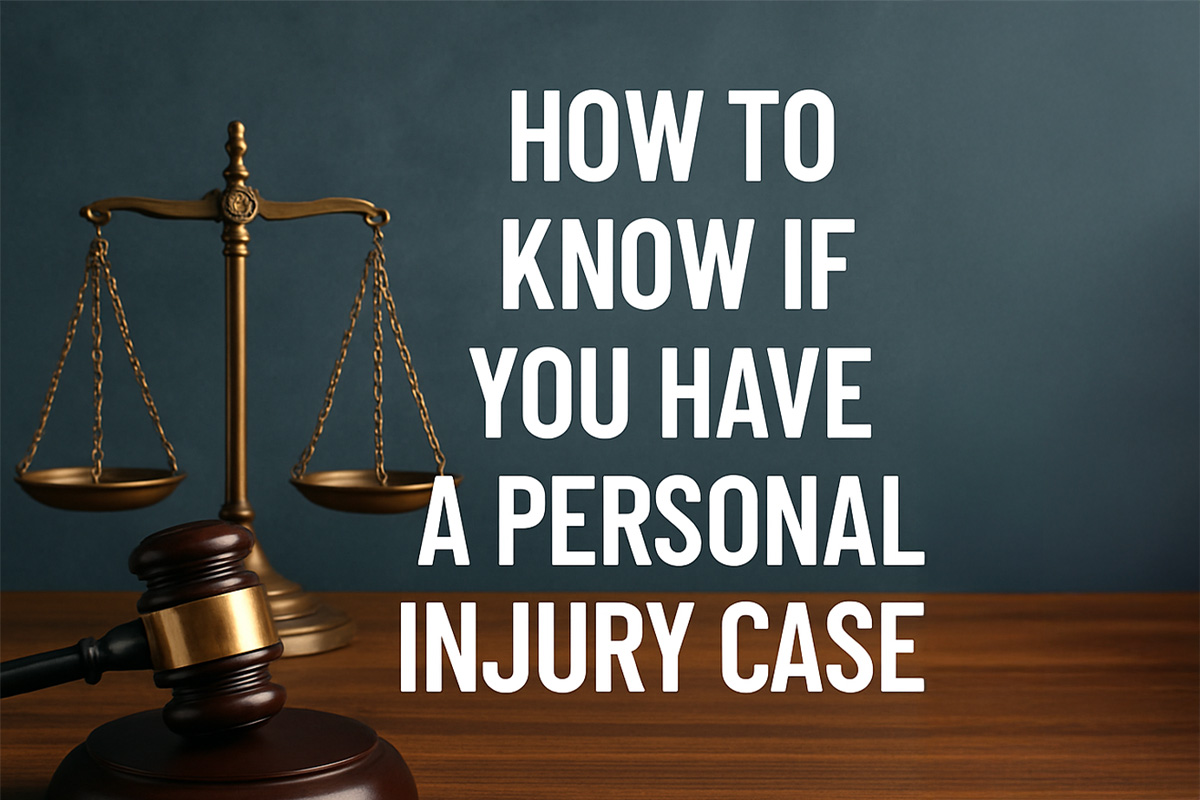In today’s fast-paced world, personal injury incidents are more common than many realize. From auto collisions and workplace injuries to slip-and-fall accidents and defective products, the scenarios that could give rise to a personal injury claim are vast. Yet many people don’t know when they have a legitimate case—or how to move forward if they do.
Understanding whether your situation qualifies as a valid personal injury claim is the critical first step toward protecting your rights and securing the compensation you may deserve. In this article, we tap into the expertise of veteran personal injury attorney Mark Peacock, who shares practical advice on how to recognize a viable case and what factors most influence its strength.
What Is Considered a Personal Injury?
Personal injury law allows individuals who have been harmed—physically, emotionally, or financially—by someone else’s negligence to pursue compensation. This legal area covers a broad spectrum of situations, including:
- Car, motorcycle, and trucking accidents
- Workplace and construction site injuries
- Premises liability (slip-and-fall, unsafe property conditions)
- Medical malpractice
- Dog bites and animal attacks
- Product liability
At its core, every personal injury claim hinges on two fundamental components: liability and damages.
Liability and Damages: The Pillars of a Strong Claim
When you speak with an experienced attorney like Mark Peacock, one of the first questions you’ll be asked is, “Who is liable for your injury?” Liability refers to the legal responsibility of the individual, business, or government entity whose actions—or lack thereof—caused the harm. But as Mark explains, liability alone doesn’t make a case.
“I look at damages first,” says Mark. “You can have 100% liability, but if the injury is minor, the case may not be worth pursuing. On the flip side, a case with high damages and unclear liability might still move forward.”
Understanding Damages
“Damages” represent the extent of harm suffered. These can be economic (tangible costs) or non-economic (subjective impacts), such as:
- Medical bills (ER visits, surgeries, therapy)
- Lost wages or future loss of earning capacity
- Pain and suffering
- Emotional trauma or psychological counseling
- Loss of consortium (impacts on family relationships)
High medical costs, long recovery periods, and permanent injuries often increase a case’s value.
Understanding Liability
Liability centers on fault and accountability. Sometimes it’s clear-cut—such as a rear-end collision. Other times, it’s more complex. Mark recalls a case where a police officer was injured while responding to an emergency. Though partially at fault, the severity of his injuries made it a strong case. This nuance shows why consulting an attorney early on can make a huge difference.
Key Factors to Determine If You Have a Personal Injury Case
If you’re unsure whether your injury justifies legal action, consider these crucial elements:
- Severity of the Injury
Minor bruises may not lead to a case—but broken bones, head trauma, or chronic pain often do. Injuries requiring surgery, physical therapy, or extended time off work significantly strengthen a claim.
- Medical Documentation
No case can move forward without evidence. Medical records, prescriptions, imaging results, and doctor evaluations are all vital. Thorough documentation not only validates your injury—it also helps determine the monetary value of your claim.
- Insurance Coverage
Even if you have a solid case, it’s important to assess whether the at-fault party has the means to pay. Attorneys investigate policy limits and defendant assets to see if it’s financially viable to pursue a lawsuit.
- Timeliness
California, like other states, has strict deadlines (statutes of limitations) for filing personal injury claims. The sooner you act, the better. Early action allows your legal team to preserve evidence, interview witnesses, and begin negotiations before the window closes.
Why Legal Representation Matters
You don’t have to figure it out on your own. Navigating a personal injury claim requires experience, negotiation skill, and deep legal knowledge. Attorney Mark Peacock has handled a wide variety of cases—from catastrophic injuries to complex liability disputes—and knows how to identify and avoid legal pitfalls that could derail a claim.
More importantly, a seasoned attorney can help maximize your compensation and protect you from pressure tactics used by insurance companies.
“The law favors those who are prepared,” Mark explains. “If you wait too long or go it alone, you may be leaving money on the table—or worse, losing your chance entirely.”
Be Your Own Advocate—Then Call a Legal One
Just like you’d seek a second opinion on a serious medical issue, it’s wise to get legal advice after any significant injury. Understanding your rights and options is the first step toward justice and recovery.
Final Thoughts: Do You Have a Case?
To determine whether your personal injury situation merits legal action, consider these questions:
- Was someone else clearly or potentially at fault?
- Have you suffered measurable injuries or losses?
- Do you have evidence to support your claims?
- Are you still within the legal time frame to file?
If you answered “yes” to any of the above, you may have a valid claim.
Talk to an Experienced Personal Injury Attorney Today
At Goyette, Ruano & Thompson, we’ve spent decades fighting for the rights of injured individuals and their families throughout California and beyond. Our personal injury team—led by attorneys like Mark Peacock—will review your case with compassion, honesty, and strategic insight.

